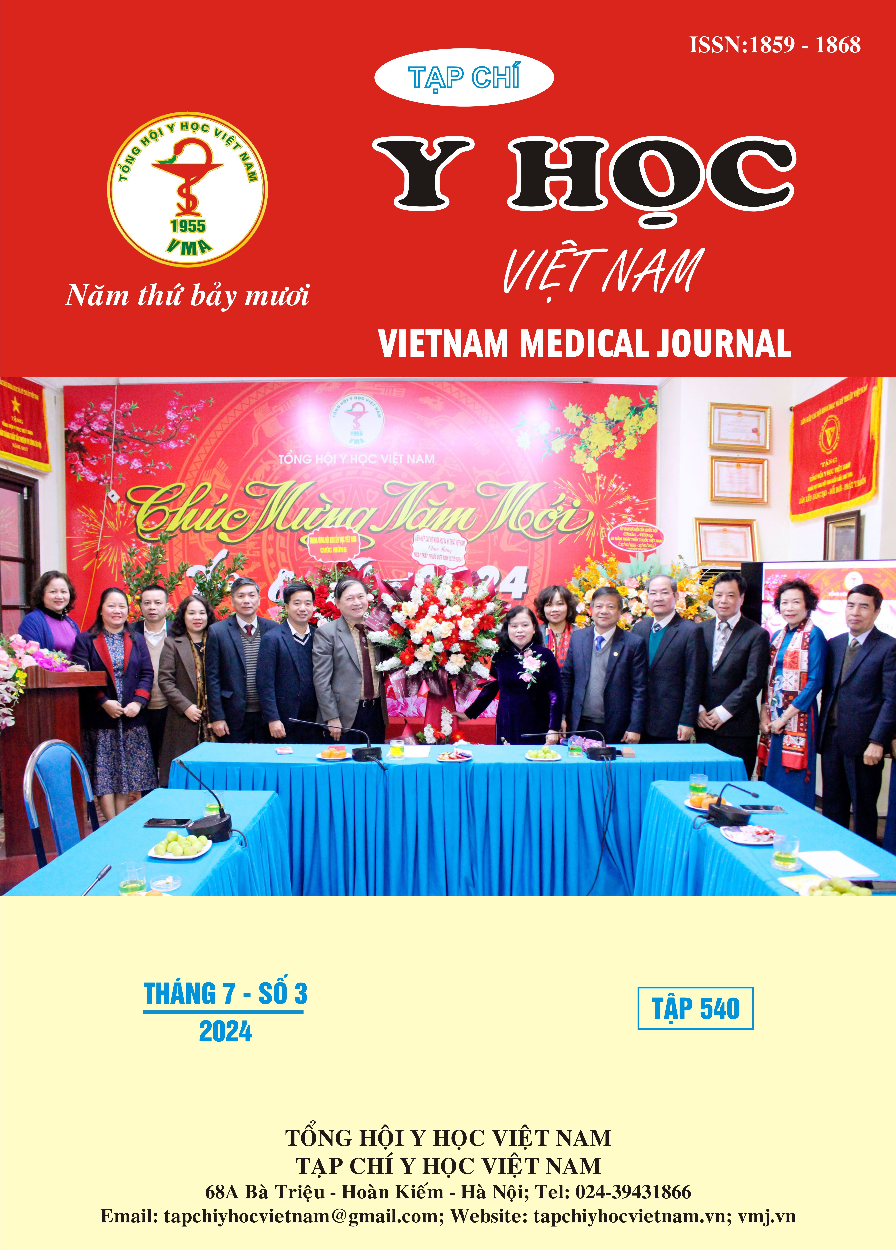THE STATUS OF BLOOD SUGAR CONTROL IN PATIENTS TYPE 2 DIABETES WITH MICROALBUMINURIA
Main Article Content
Abstract
Objective: Blood sugar control in patients with type 2 diabetes (T2DM) with microalbuminuria. Methods: A cross-sectional study on 269 patients with diabetes 2 at Thai Binh Medical University Hospital. The study period is from January 2021 to October 2022. Results: A total of 269 patients with diabetes 2, 139 (51.7%) were female and 130 (48.3%) were male with an average age of 66.68 ± 9.25 years. The average duration of diabetes 2 was found to be 8.34 ± 5.32. The mean HbA1c level was found to be 7.63 ± 1.48. There were 80 patients (29.7%) found to have microalbuminuria. There is a difference in blood glucose before and after 3 months of treatment in diabetic patients with microalbuminuria. Conclusion: There is a difference in blood glucose before and after 3 months of treatment in diabetic patients with microalbuminuria. There is an association between microalbuminuria in type 2 diabetes with good glycemic control. Urinary microalbumin testing and HbA1c testing should be performed in both new and established diabetes 2 patients as an early sign of renal dysfunction and glycemic control.
Article Details
Keywords
Control; Microalbuminuria; Type 2 diabetes; Blood glucose
References
2. Olokoba AB, Obateru OA, Olokoba LB (2012). Type 2 diabetes mellitus: a review of current trends. Oman medical journal 27 : 269.
3. Coonrod BA, Ellis D, Becker DJ, et al (1993). Predictors of microalbuminuria in individuals with IDDM: Pittsburgh Epidemiology of Diabetes Complications Study. Diabetes care 16 1376-1383.
4. Pan CY, Ho LT, Soegondo S, et al (2008). Prevalence of albuminuria and cardiovascular risk profile in a referred cohort of patients with type 2 diabetes: an Asian perspective. Diabetes technology and therapeutics, 10: 397-403.
5. American Diabetes Association (2020). Diagnosis and Classification of Diabetes Mellitus. . Diabetes Care, 27.
6. Võ Xuân Sang Trương Quang Bình (2010). Khảo sát microalbumin niệu ở bệnh nhân ĐTĐ typ 2. Tạp chí y học TP Hồ Chí Minh,, 14 (1), 1-5.
7. Wild S, Roglic G, Green A, et al (2004). Global prevalence of diabetes: estimates for the year 2000 and projections for 2030. Diabetes care 27: 1047-1053.
8. Gerstein HC, Mann JF, Pogue J, et al (2000). Prevalence and determinants of microalbuminuria in high-risk diabetic and nondiabetic patients in the Heart Outcomes Prevention Evaluation Study. Diabetes care 25 : B35-B35.
9. Yokoyama H, Kawai K, Kobayashi M (2007). Microalbuminuria is common in Japanese type 2 diabetic patients: a nationwide survey from the Japan Diabetes Clinical Data Management Study Group (JDDM 10). Diabetes care 30 : 989-992.
10. Tạ Văn Bình (2003). Dịch tễ học bệnh ĐTĐ, các yếu tố nguy cơ và các vấn đề liên quan đến quản lý bệnh ĐTĐ tại khu vực nội thành 4 thành phố lớn. Bộ Y tế, Bệnh viện nội tiết, Nhà xuất bản y học.


